Cards In This Set
| Front | Back |
  |
Tomb Tiles from Sichuan, Late Han. CHINA-The narrative decorations on these bricks derive from free brush drawings and consist of a joyous mixture of real and mythological subjects. Scenes of harvesting, hunting and teaching record, if somewhat sketchily, the various activities of the time.
|
  |
Boshan Incense Burner from Tomb of Liu Sheng, Han. Mancheng, Hebei. Late 2nd century. Cast bronze with gold & silver. CHINA-In the form of a mountain-small animals and humans wander around the peaks
|
 |
Tomb of Qin Shihuangdi. Life-size ceramic figured representing members of his army. 210 BC CHINA-it was rigged to shoot people who tried to break in-terracotta army-discovered in 1970's-supposed to help rule another empire in the after life-Qin Shi Huang's actual tomb hasn't been opened-ceramic guardians- compare to Haniwa figures and tomb of Nintoku
|
 |
Colossal Buddha. Yun Gang Caves. CHINA-relief and free-standing sculpture-broad-shouldered, sturdy face and serene expression-earth-tones carry out their seriousness
|
 |
Colossal Buddha Longmen. CHINA-Compared to Yun Gang caves, this Buddha is much more stern and creates a different reaction in its viewers.
|
 |
NOT ACTUAL IMAGEStone relief of Palace concert. Shandong funerary chapel. Han. 114CE. CHINAsilhouette-style composition-scenes cut in stone or brick are related to narrative scenes because they tell a story
|
 |
Fan Kuan. "Travellers Among Mountains and Streams". N Song. 11th century. CHINA-scroll painting-the massive rock dominates the scene and controls the picture which is divided into background and foreground by a cloud-filled area in the middle.
|
 |
Su Shi. "Cold Provisions Day". Calligraphy. N Song. 11th Century. CHINA-This is by a scholar, poet, and calligrapher.-the way he writes says something of his character, as writing in Chinese is considered an art form.-Su Shi was a noted painter of bamboo.
|
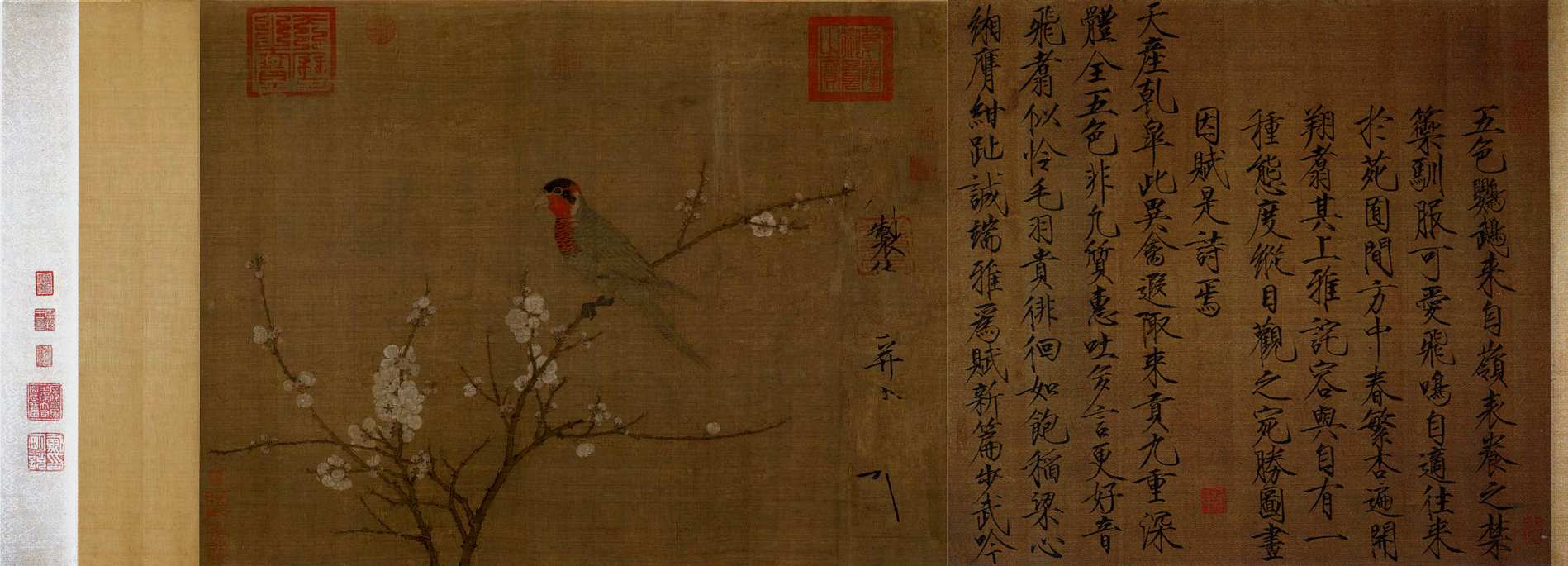 |
Emperor Hui Zong. "Five Colord parakeet on a branch of apricot Blossom" Color on Silk. 12th cent, CHINA-jewel-like representations of birds and flowers-highly detailed, yet not overdone with its simplicity.-far removed from grand, detailed landscapes of the 11th century
|
 |
A Sheep and Goat, by Chinese painter Zhao Mengfu. Handscroll, ink on paper-scholar painter
|
 |
Imperial City, Beijing. Ming. 15th century CHINA-grand plan included ceremonial, religious, administrative and domestic quarters.-oppressively imposing meeting places when they are empty because they are so grand.-ceremonial buildings are oriented in a series down a central north-south axis, facing south. axis is aligned with the south gate of the city wall.
|
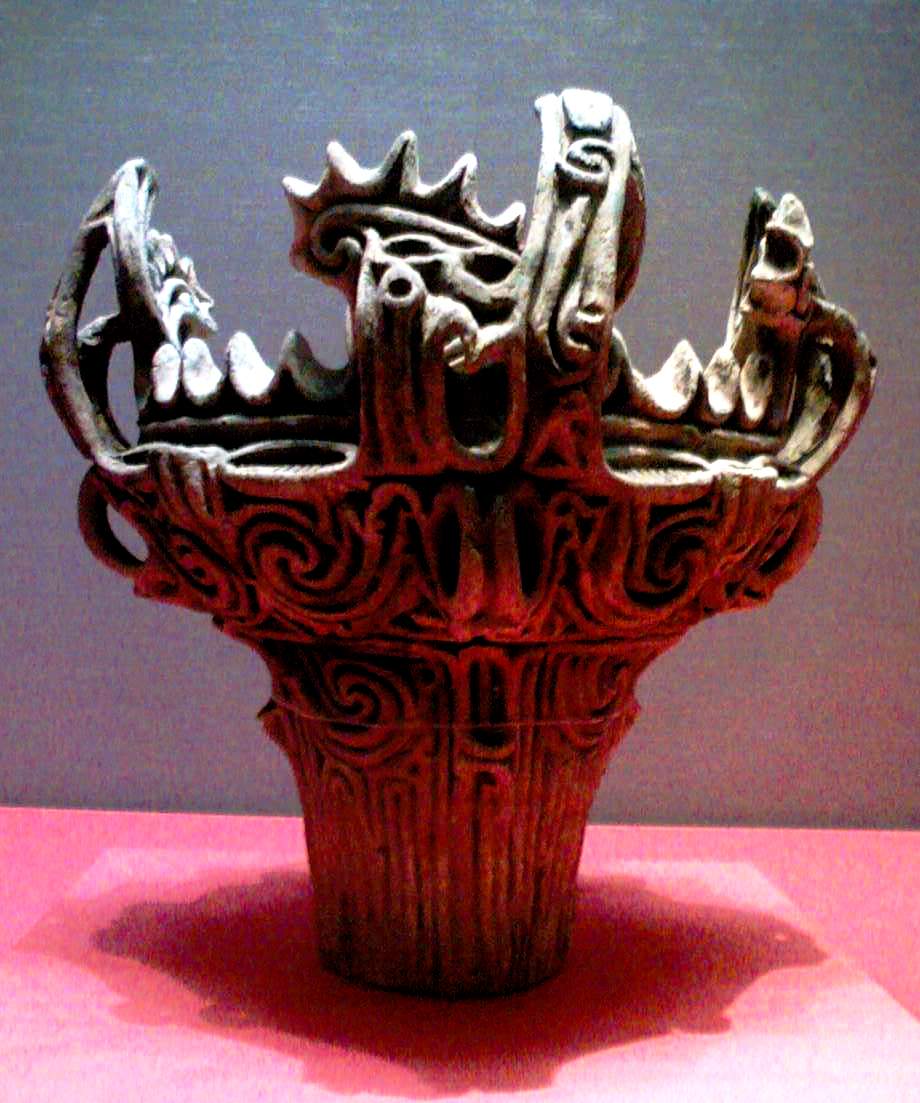 |
Umataka fired clay urn in basketwork form. Middle Jomon. JAPAN-very detailed and wild and abstract.-probably for ritual offerings
|
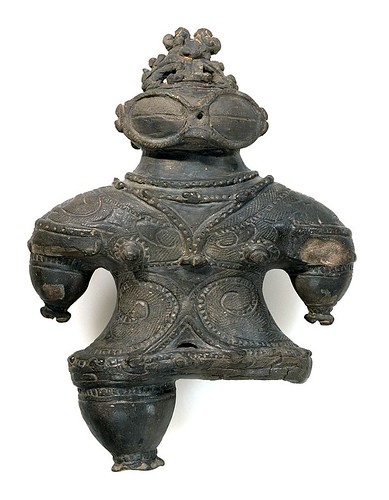 |
Dogu Figure. Jomon Period. JAPAN-shamanistic features, highly decorated.-horizontally slitted eyes that some say are the product of an age of deep superstition and fear
|
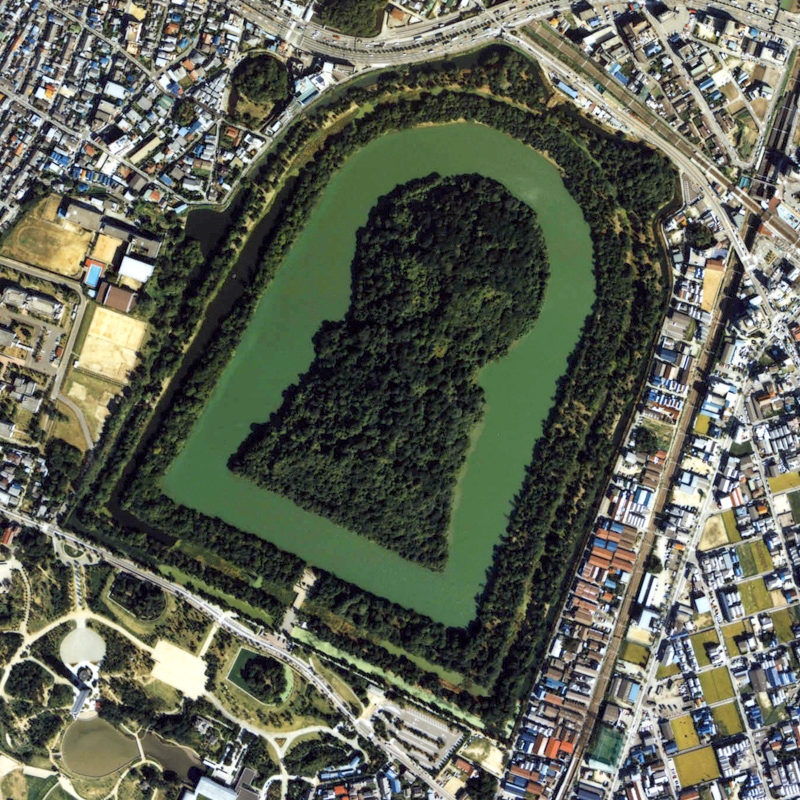 |
Emporer Nintoku's Tomb. 4th century. Kofun Period. Japan.-figured here are much smaller, the comparison to Qin Shi Huangdi's tomb is that it is exposed, natural, and speaks more to the gods than the hidden world
-largest mausoleum.-keyhole-shaped mount with trapezoidal elevations in front.-pottery figures called HANIWA are characteristic of these tombs. they guard the tomb. |
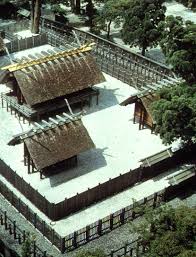 |
Ise shrine. 4th century. Kofun period. Japan.-rebuilt every 20 years-when one sector is in use, the other is kept clean and empty.-made of wood
|



